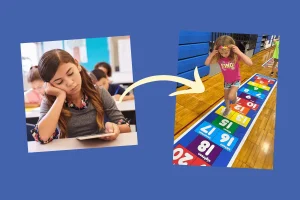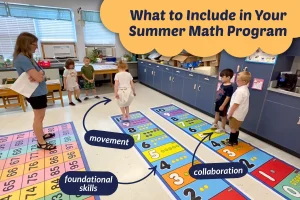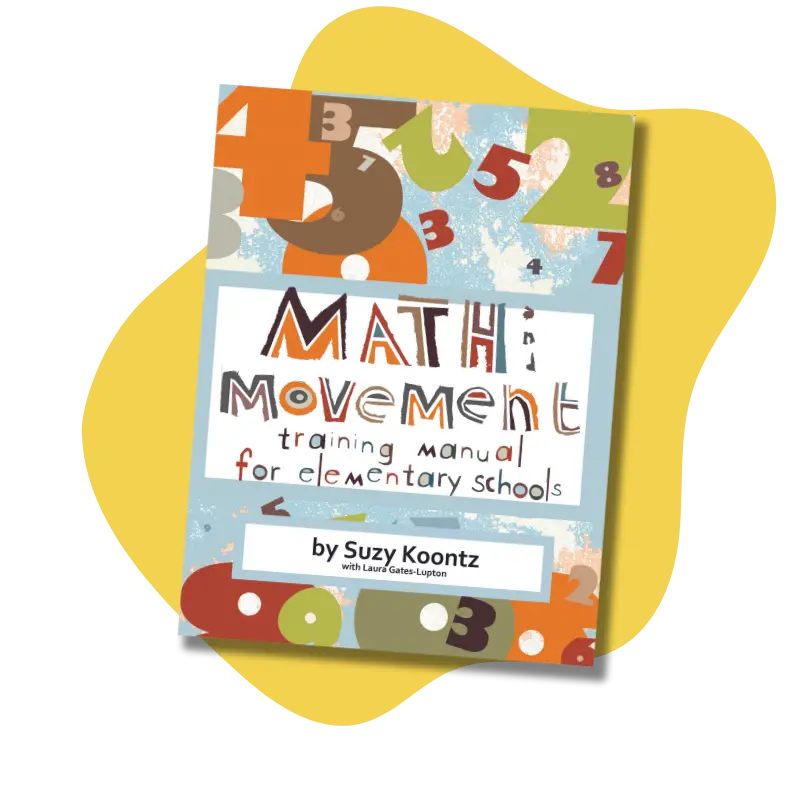
- Trusted by Over 2000 Schools Nationwide
- Top-Rated PD Provider ★★★★★ 4.77
- Save with our Kits & Packages – Shop Now! →

By Suzy Koontz
A very powerful assessment technique utilized by Math & Movement is the process of pre and post-testing participants. This gives us the ability to see how efficient our methods are for the topics covered during a short term event or a longer term implementation of the program in a classroom. This method is terrific for showing how participants improve their skills, but it doesn’t tell the whole story. For that, we need to compare these scores to scores from a control group.
While we have known that comparing our participants to a control group is the ideal approach for demonstrating the effectiveness of the Math & Movement program, it has been challenging to get that kind of data; teachers have been overwhelmed with required assessments and we did not want to add to their already-packed schedules. That recently shifted when a teacher (Teacher A) had the opportunity to work with a local university to implement a deeper study in January 2016.
With the help of the university, a group of students with similar characteristics as Teacher A’s classroom were identified as a control group. One group (the control group) was taught using the traditional learning style over a six-week period. Over the same period, the other group was taught by Teacher A using the more active and participatory Math & Movement practices.
The results of these tests were extraordinary – exceeding both teachers’ expectations! Students in the control group were staggeringly outperformed by the Math & Movement students in their post testing. The control group had an increase in mixed multiplication problems learned of 35% and the 3rd graders learning with the kinesthetic approach of Math & Movement saw a 213% increase!
On a test that measured skill/success with word/picture problems (the Easy CBM test), the control group showed an increase of just 7% and the M&M students saw an increase of 48%. Additionally, the control group only saw a 2% increase in retention rate over a six-week period, while the intervention group’s retention rose 82% over the same period!
Showing that kids improve skills by 213% or 48% over six weeks is powerful. Comparing that to what a similar group does over the same period, puts the participant group’s success into perspective. With this data, there is no denying that Math & Movement can create impressive results inside the classroom. This data also shows the urgency of getting Math & Movement into every classroom – all students can benefit from kinesthetic learning and all students deserve the opportunity to succeed.
Movement isn't just for recess
Want to get started with movement-based learning right now? Enter your email to get our training manual with over 250 active math movements. No materials necessary!




Subscribe to Our Newsletter
We never share or sell your data.
Please leave your email and a quick note for us. We will get back to you soon! In the meantime, here are answers to some of our most common questions:

Enter your email to get our training manual with over 250 active math movements. No materials necessary!
We never share or sell your data.